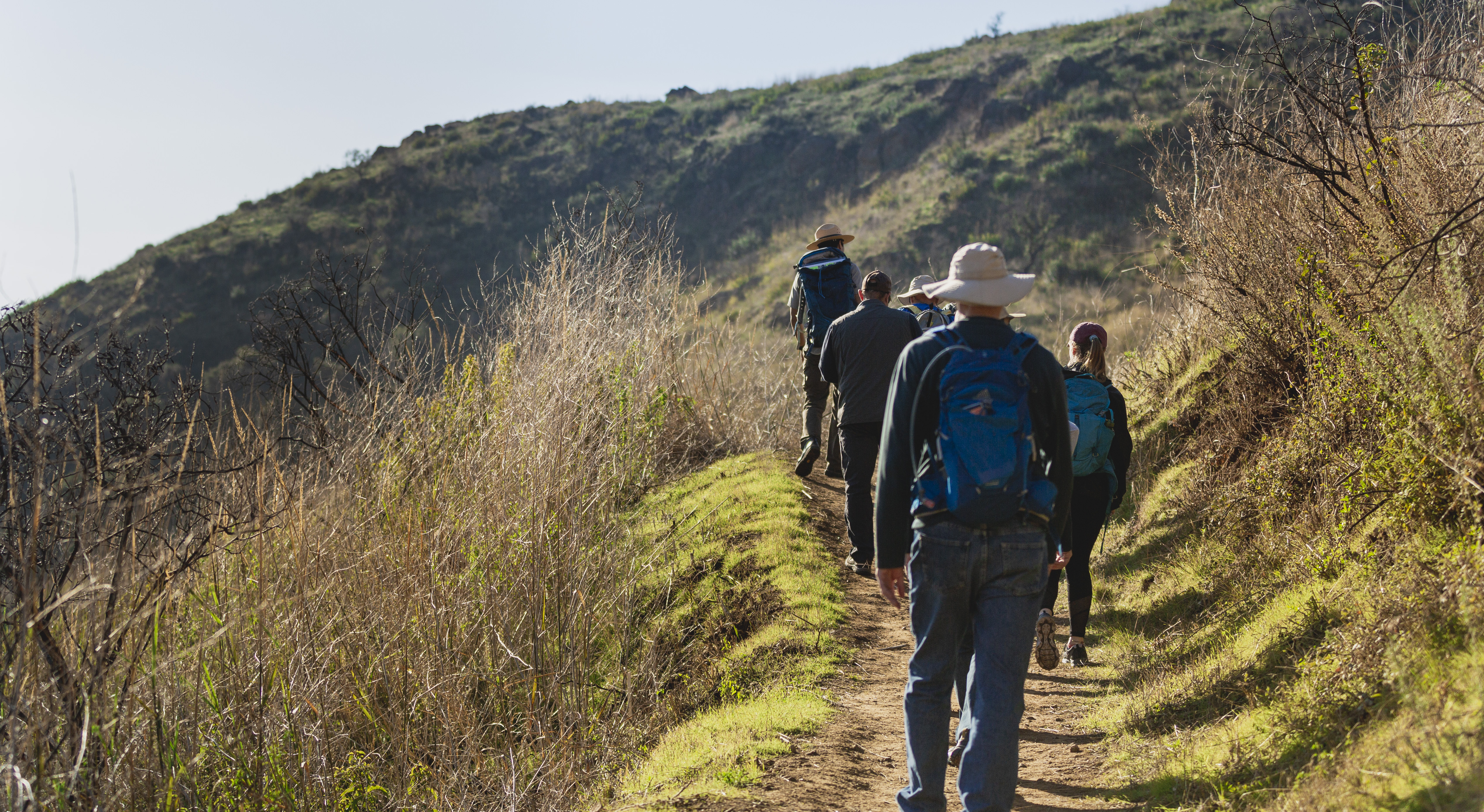News Release
You are viewing ARCHIVED content published online before January 20, 2025.
Please note that this content is NOT UPDATED, and links may not work. For current information,
visit https://www.nps.gov/aboutus/news/index.htm.

National Park Service
|
Subscribe
|
Contact: Ana Beatriz Cholo, 805-750-9356 (cell); 805-370-2385 (office)
THOUSAND OAKS, Calif. – The results of a trail user visitor survey conducted in 2018 reveals that visitors to the nation’s largest urban national park would like to see improvements made to bathrooms, drinking fountains, trash cans and maps of trailheads and trails, National Park Service officials say.The survey (click on the following links for the final report and briefing paper), which was conducted by staff and volunteers from Santa Monica Mountains National Recreation Area (SMMNRA) in collaboration with the UCLA Luskin Center for Innovation, analyzed equity and access along five key dimensions: visitor demographics and geographic characteristics of visitors; travel distance, time, and cost; modes of park access; activity engagement; and amenities used or desired.
“This survey is helpful because it provides us with vital information that will inform us in how we strategically allocate resources at park trailheads,” said David Szymanski, the park superintendent. “It also provides us with a benchmark for additional trailheads we may want to construct in the future.”
The survey found that the top most-used amenities were parking, overlooks and viewpoints; bathrooms; and trash cans. Parking was the most commonly used amenity (and also the most commonly cited reason for why respondents would avoid visiting or returning to a trail).
Szymanski added that he was pleased to discover that the park, a heavily trafficked recreational resource that continues to grow in popularity, has become more diverse over the past 20 years.
“The gap is closing and that is clearly evident in comparing the results between 2002 and 2018,” he noted. “But we recognize that there is still a ways to go.”
Programs for lower income, people of color, youth and other underrepresented populations continue to be a priority for the park, he added.
Other major findings show:
·The proportion of Latino survey takers increased from 12% in 2002 to over 21% in 2018.
·The percentage of survey participants in 2018 increased for all non-white races/ethnicities from 2002, with a near doubling of the percentage of Latino visitors who responded to the survey.
·Nearly 74% of all ZIP codes across Los Angeles County and Ventura County had at least one survey respondent, indicating that residents from nearly all parts of this region utilize the largest urban park in the nation.
·63% of survey respondents were non-Hispanic white, compared to 26.1% of Los Angeles County as a whole.
·The median household income of respondents was between $75-100,000, compared to roughly $61,000 in Los Angeles County.
·The low percentage of public transit visitors indicates that this mode is either limited, inconvenient, or not preferred.
Volunteers and staffers collected 4,425 surveys, of which 4,381 surveys provided usable data for analysis. This most recent survey was significantly more comprehensive than the last visitor survey. An additional 12 trailheads were included and there were 3,400 more surveys than in 2002.
The UCLA Luskin Center for Innovation designed the 2018 visitor use survey, and along with 200+ volunteers and NPS staff members, distributed it at 45 trailheads. The trailheads chosen included well-known, primary entrances into parks.
Santa Monica Mountains National Recreation Area (SMMNRA) is the largest urban national park in the country, encompassing more than 150,000 acres of mountains and coastline in Ventura and Los Angeles counties. A unit of the National Park Service, it comprises a seamless network of local, state, and federal parks interwoven with private lands and communities. As one of only five Mediterranean ecosystems in the world, SMMNRA preserves the rich biological diversity of more than 450 animal species and 26 distinct plant communities. For more information, visit nps.gov/samo.
###
Last updated: January 22, 2020
